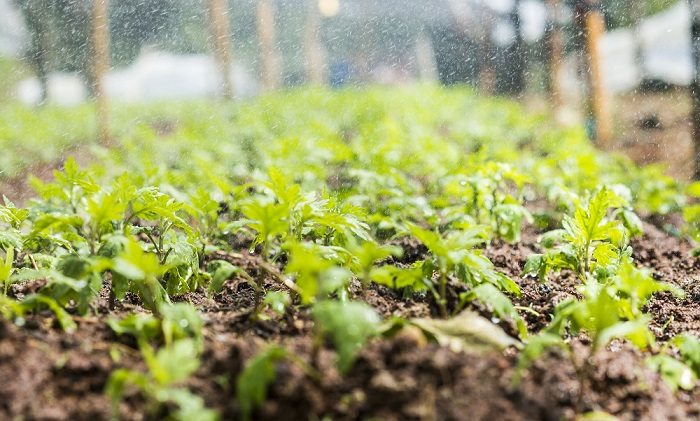
D you treat landscaping as an art or is it your passion? Perhaps you just need ideas you can show to your designer and let someone else take care of the hard work. So what is hot currently in garden design? Here’s what according to Gardendesign.com
Form of Art?
Dubbed the slowest of the performing arts, gardening can seem trend proof. After all, you can’t hurry an oak’s progress from acorn to shade tree, and making a garden isn’t like buying a new throw rug for your home but rather stitching a few glimmering threads of your own into nature’s rich tapestry.
And yet tastes do change in gardening, as your once-obsessed African violet-growing parents or grandparents could tell you. Those who work with the buying public are especially attuned to what’s hot and what’s not. With that in mind, we asked designers and retailers across the country to share the biggest trends they anticipate for 2017. Here are trends they say we’ll be seeing more of.
Natural Materials
After years of minimalist dominance in hardscaping materials, furniture, and decor, designers are noticing renewed interest in natural materials and a less geometric style. Designer Julie Blakeslee at Big Red Sun in Austin, Texas, says, “Rather than clean and modern, clients are asking for a more old-fashioned, more DIY look in their gardens.

We’ve been using railway ties, free-form decks, smaller outdoor furniture, and swing seating. I think clients are looking for something more authentic and real. The Dwell look has been replicated so many times. People may be yearning for something more organic in their gardens.”
Lawn Reimagined
Long a symbol of the American dream, the expansive and neatly manicured lawn continues to take a hit, due in part to drought, water shortages, and concerns about the environmental impact of fertilizing, pest-control treatments, and other traditional maintenance. Lawn-like alternatives, however, are hot.
“We’re installing a lot more grass mixes that don’t need to be mowed, like Habiturf [a native turfgrass blend for the Southwest], and also taller, prairie-type mixes,” says Moring. While he doesn’t anticipate the end of traditional lawns anytime soon, his clients who do want a lawn are opting for smaller ones than in the past. “These are lawns that will be used as opposed to being just for show,” he says.
Despite controversy over its environmental impact, faux grass continues to grow in popularity, thanks to improvements in how natural it looks. “We are still installing a lot of artificial turf,” says Blakeslee in Austin. Designer Sue Goetz of Creative Gardener in Tacoma, Washington, is too, especially in small spaces that clients don’t want the bother of mowing and for pet play areas.
“I have had more requests for artificial turf in the last year than ever,” Goetz says of her Washington clients, adding, “I’d always thought it was just a California thing.” She believes it has to do with how far the product has come in the last few years. “It looks and feels real. It also speaks to a desire for low maintenance.
Old and New Mash-Up

Choosing one style and sticking doggedly to it, whether modern or traditional, is passé, designers say. “Mixing old and new, a trend in interiors and architecture, is about to arrive in gardens,” says Hartlage. “It used to not be OK to mix styles, but now it’s acceptable. It’s not about modern or traditional anymore but how you combine the two in a compelling way, either by putting modern elements in a traditional garden or incorporating bold, traditional elements in a modern garden.”
Dwarf Shrubs
American yards are shrinking as houses grow larger on ever-smaller lots. Along with less space for plants, designers are hearing ever more requests for gardens that require little day-to-day maintenance. Dwarf shrubs to the rescue! “Baby boomers are aging, but they still love their gardens,” says Goetz. “We are finding creative ways to get rid of high maintenance, like using evergreen shrubs.”
Hartlage agrees. “Shrubs are strong due to their low maintenance needs,” he says, “and dwarf summer-blooming varieties are well suited to smaller gardens, like hydrangea ‘Bobo’ and ‘Little Quick Fire’. If you only need a 2-foot plant, why plant something that’ll grow to 4 feet and then spend the next 20 years clipping it? It’s all about plants that are the appropriate scale for the garden.”


